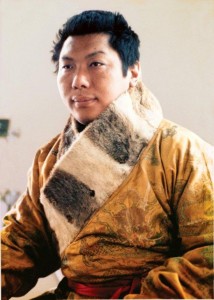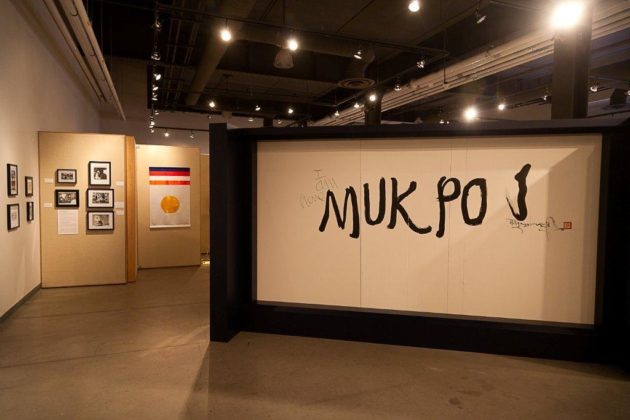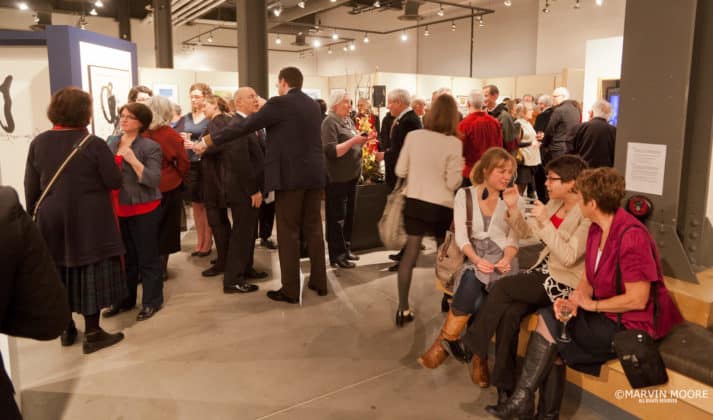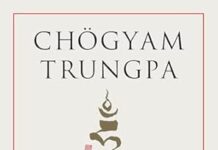To commemorate the 25th Anniversary of Chögyam Trungpa’s parinirvana the Chögyam Trungpa Legacy Project —together with the Halifax Shambhala Centre and the Shambhala Archives—has mounted an extraordinary exhibit at the Canadian Museum of Immigration at Pier 21.
Entitled, Great Eastern Sun, the Shambhala Community in Nova Scotia, the exhibit presents a uniquely Shambhalian esthetic, in a uniquely Canadian setting.
It includes objects, artifacts, and photographs from Chögyam Trungpa’s life arranged with an elegant appreciation of space and placement. The exhibit also tells the story of Chögyam Trungpa’s journey from Tibet to Nova Scotia, and of the hundreds of people who followed him here, and continue to be a part of the larger community.
For our cousins south of the 49th, Pier 21 is the Ellis Island of Canada—a gateway through which a million immigrants entered Canada during the early-to-mid twentieth century. The Great Eastern Sun exhibit is one of many hosted by the museum’s Community Presents program, which encourages local cultural groups to tell their stories, while celebrating Canada’s commitment to cultural diversity.
On the evening of February 23rd, 2012, a capacity crowd of 150 or so—including Member of Parliament, Megan Leslie; and Councillor Jennifer Watts, as well as many memebers of the Shambhala community—gathered at Pier 21 to celebrate this first ever public Chögyam Trungpa exhibit.
Tanya Bouchard, Chief Curator of the Museum, and Carolyn Rose Gimian, Director of the Legacy Project spoke during the reception. Here are excerpts from their remarks.
Remarks by Carolyn Rose Gimian
Carolyn Rose Gimian is the director of the Chögyam Trungpa Legacy Project
Chögyam Trungpa, a pioneer in bringing the practicing lineages of Buddhism to the West, was like a very bright star or comet streaking across the sky. For many of us in the this room tonight, he was our guide. He was a different light to different people but always burning, bright, brilliant. That light continues to shine today, as bright as when he died, 25 years ago, in this very city.
Trungpa Rinpoche brought Shambhala to Halifax and to Nova Scotia as the last, best place: a place willing to absorb both our naivete and our arrogance while appreciating our humanity, sincerity and good heart. Amazingly, after 25 years, we’re all still together, more or less, to our great pain and pleasure. And we have been joined by many Nova Scotians.
With some measure of luck, a space like this exhibit can create a living space where you can see, not just the artifacts of someone’s life, but hopefully in this case, you feel something, something comes alive, so that you can feel what it’s like to be in the presence of the mind of CTR—so it’s not a dead thing but a living thing, and this is the great hope or faith that we could have in the ability of the teachings to be passed on. Fundamentally that is what is meant by lineage, a quality of embodiment that spans past, present and future. This is also the great secret about the Shambhala Archives—which those of us who work there have known for a long time: That these teachings continue to radiate.
In terms of presenting the Shambhala world to others, we can take heart that, if we create the container, the sanity of the lineage will fill that container.
Welcoming Remarks from Tanya Bouchard
Tanya Bouchard is the Chief Curator of the Canadian Museum of Immigration at Pier 21. These remarks were presented in both French and English. Check against delivery.
Good evening everyone, and welcome to the Canadian Museum of Immigration at Pier 21. I wish to give a special welcome to Member of Parliament, Megan Leslie; Councillor Jennifer Watts, as well as Richard Reoch, Carolyn Mandelker, and Mitchell Levy of Shambhala.

Thank you all, for being here this evening for the opening reception of the Great Eastern Sun: The Shambhala Community in Nova Scotia.
This Community Presents exhibition was developed in partnership with the Halifax Shambhala Centre. For those of you who I have not yet had the pleasure to meet, my name is Tanya Bouchard and I am the Chief Curator here at the Museum.
The Museum’s Community Presents Program provides an opportunity for diverse cultural groups and community organizations to share their unique stories, and cultural traditions, with a wider public audience. The Community Presents Program exemplifies the Museum’s commitment to enhancing public understanding of the vital role immigration has played in the building of our country, and of the contributions of immigrants to Canada’s culture and way of life.
This exhibition traces the unique and powerful immigration story of Chögyam Trungpa’s journey from Tibet to Nova Scotia, and highlights the contemplative practices in the Shambhala tradition. Sharing cultural history and customs like this—whether it is through photographs like those chronicling Trungpa’s journey, personal anecdotes, music, or artifacts like the impressive robe on display, or the original wall from the first Shambhala meditation centre established in Halifax—allows us all to learn and develop a better understanding of our collective Canadian cultural history and heritage.
When you explore both Community Presents exhibitions in this space tonight I think that this cultural richness will shine through.* The exhibitions on display showcase the unique traditions of very different groups. Yet they share more common threads than differences. Both exhibitions teach us about active communities that are proud of their distinct cultural heritage and of how their traditions have shaped, and been shaped by, culture in our greater Halifax community.
*There is an exhibit from the Halifax Ukranian community on display as well.
Video tour of Great Eastern Sun Exhibit























